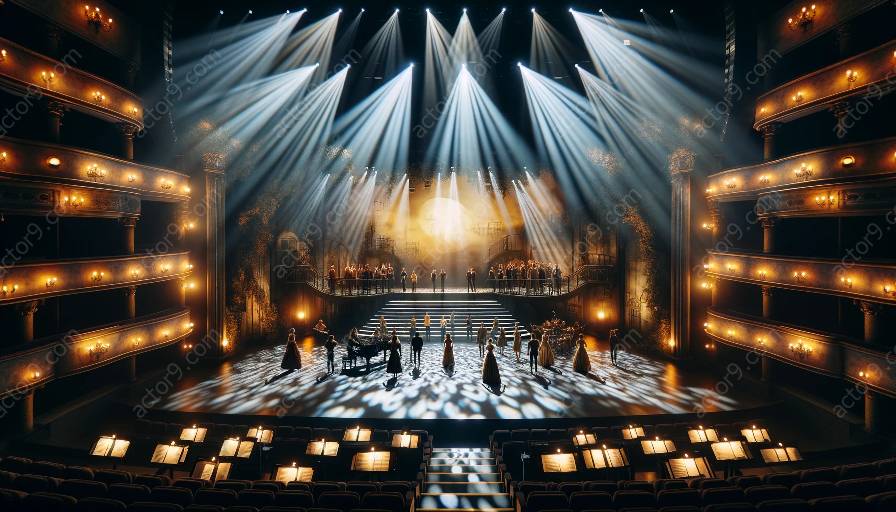Lighting design plays a crucial role in creating the spectacle of musical theatre, enhancing the visual elements and contributing to the overall experience for the audience. By manipulating light and shadow, color, and intensity, lighting design serves as a powerful tool in evoking emotions, setting the mood, and directing the audience's attention. In this topic cluster, we will delve into the significance of lighting design in musical theatre and explore notable examples of its use.
The Role of Lighting Design in Musical Theatre
In musical theatre, lighting design is an art form that goes beyond mere illumination. It is a storytelling device that works in harmony with other theatrical elements to heighten the impact of performances. The interplay of light and darkness can create dynamic visual compositions, highlighting characters, sets, and choreography, and transforming the stage into a mesmerizing world of spectacle.
Enhancing Atmosphere and Mood
One of the primary contributions of lighting design to musical theatre is its ability to shape the atmosphere and convey mood. By utilizing different color temperatures, angles, and movements, lighting designers can establish the emotional tone of a scene or musical number. For instance, warm, soft lighting may create a romantic ambiance for a love song, while sharp, contrasted lighting may intensify a dramatic confrontation.
Directing Focus and Emphasizing Action
Lighting design also serves as a means of guiding the audience's attention and accentuating key moments on stage. Through carefully planned lighting cues and effects, designers can draw focus to specific characters or pivotal actions, adding depth and significance to the narrative. Spotlighting, color shifts, and dynamic patterns can all be employed to emphasize the dynamics of a performance.
Conveying Symbolism and Visual Language
Furthermore, lighting design in musical theatre is an expressive tool for conveying symbolism and visual language. It can symbolize transitions, evoke specific emotions, and represent abstract concepts. The use of light and shadow to create silhouettes, patterns, and textures can add layers of meaning to the storytelling and immerse the audience in the symbolic language of the production.
Notable Examples of Spectacular Lighting Design
Throughout the history of musical theatre, there have been numerous instances where lighting design has significantly contributed to the spectacle of a production. One notable example is the iconic chandelier scene in Andrew Lloyd Webber's 'The Phantom of the Opera.' The dramatic play of lighting and shadows as the chandelier ascends, combined with the haunting music, creates a mesmerizing visual and emotional impact on the audience.
Another remarkable example is the use of lighting in the musical 'Les Miserables,' particularly during the song 'One Day More.' The intricate interplay of lighting and stage design enhances the grandeur of the ensemble performance, amplifying the epic scale of the musical's climax and stirring the audience's emotions.
Similarly, in 'Wicked,' the enchanting visual effects and lighting design during the song 'Defying Gravity' contribute to the magical and awe-inspiring nature of the performance. The use of vibrant colors and dynamic lighting movements elevates the spectacle and amplifies the sense of wonder for the audience.
In Conclusion
Lighting design is an integral component of the concept of spectacle in musical theatre. Its ability to enhance atmosphere, direct focus, convey symbolism, and create visual impact elevates the overall experience for both performers and audiences. By delving into the artistry of lighting design and exploring notable examples, we gain a deeper appreciation for its transformative role in shaping the world of musical theatre.




































